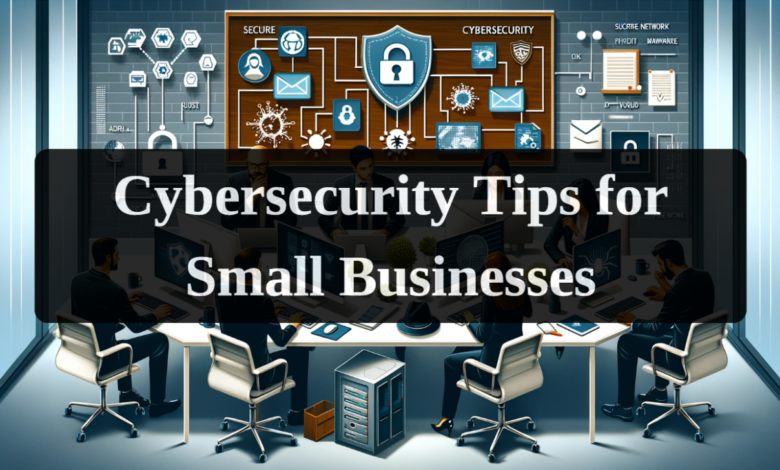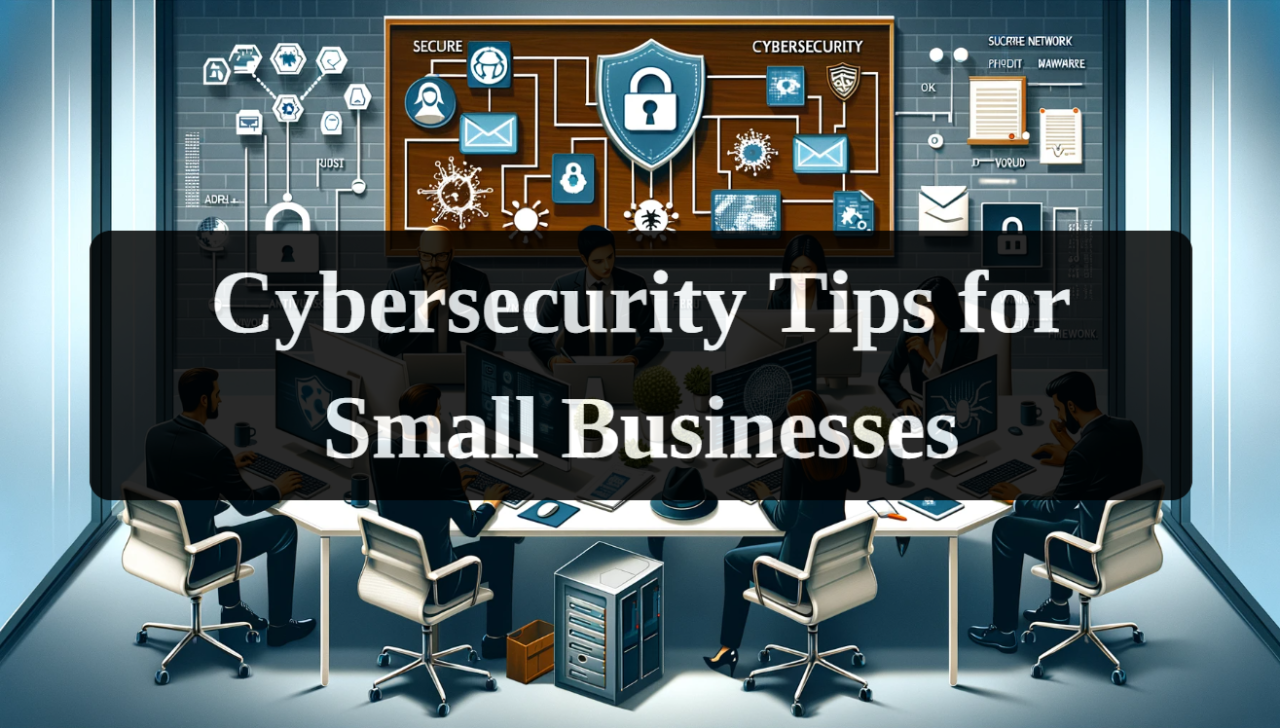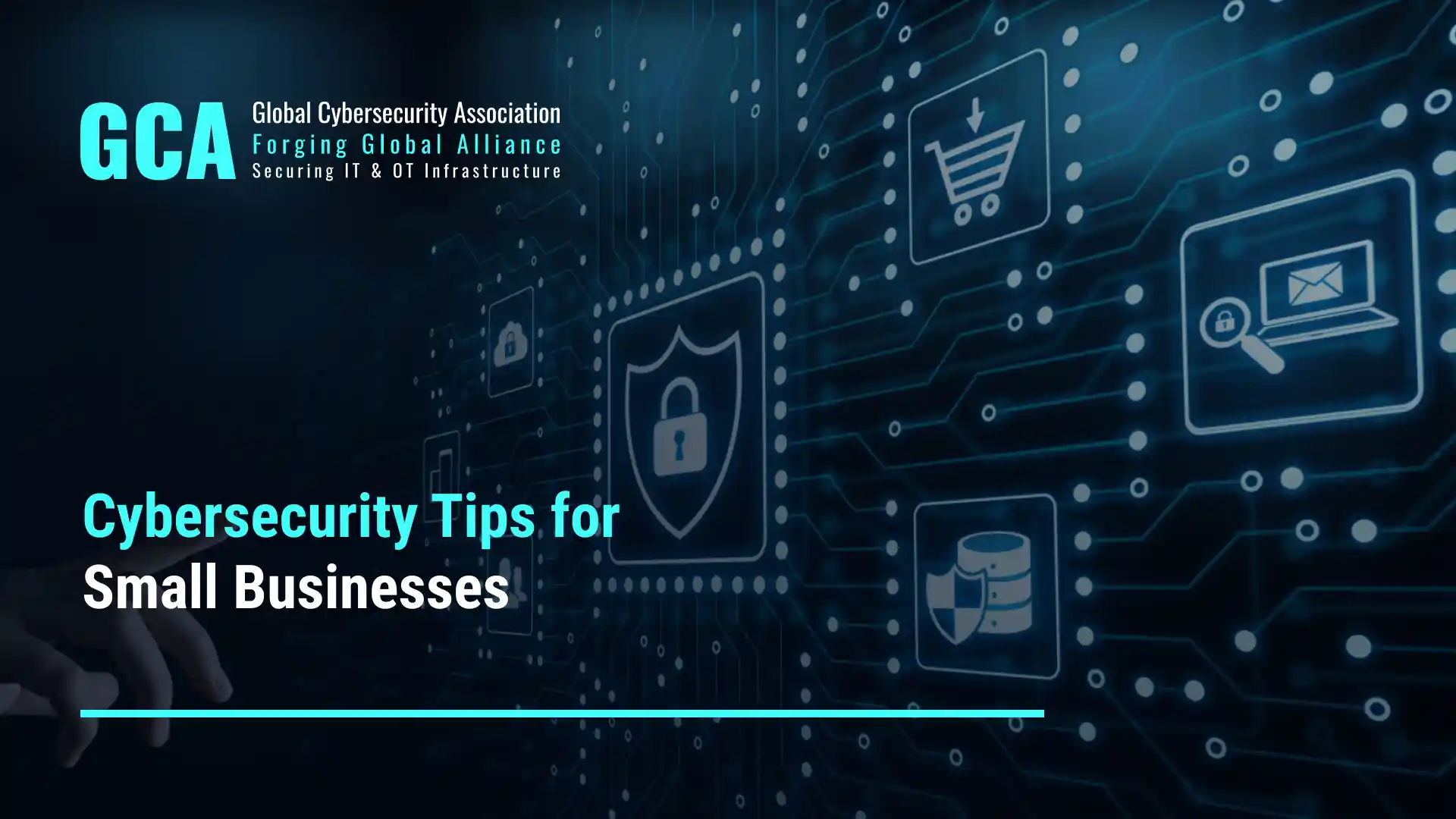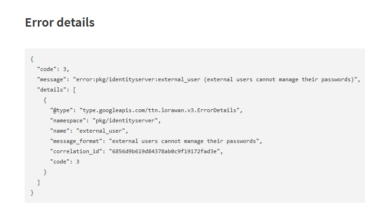
5 Ways Small Businesses Can Save Money with Cybersecurity
5 Ways Small Businesses Can Save Money with Cybersecurity – It’s a fact: robust cybersecurity isn’t just about protecting data; it’s about saving money. Think about it – the costs of a data breach, from legal fees to lost productivity and damaged reputation, can cripple a small business. This post dives into five practical, cost-effective strategies that will strengthen your security posture without breaking the bank.
Get ready to boost your bottom line while safeguarding your business!
We’ll cover everything from implementing strong password policies and multi-factor authentication to leveraging free cybersecurity tools and training your employees. We’ll also explore the importance of regular data backups and staying updated on the latest threats. By the end, you’ll have a clear action plan to improve your cybersecurity and save money in the process.
Implement Strong Password Policies and Multi-Factor Authentication

Robust password policies and multi-factor authentication (MFA) are cornerstones of a cost-effective cybersecurity strategy for small businesses. Neglecting these fundamental security measures can lead to significant financial losses from data breaches, legal repercussions, and damage to reputation. Implementing these strategies proactively is far cheaper than dealing with the aftermath of a security incident.Strong password policies are crucial for preventing unauthorized access to sensitive business data.
Weak passwords, often easily guessed or cracked, are a major entry point for cybercriminals. Multi-factor authentication adds an extra layer of security, making it exponentially harder for attackers to gain access even if they manage to obtain a password. This combination significantly reduces the risk of breaches and associated costs.
Strong Password Policy Requirements
A strong password policy dictates minimum password length, complexity requirements (uppercase, lowercase, numbers, symbols), and frequency of changes. It should also prohibit the use of easily guessable information like names, birthdays, or common words. A well-defined policy minimizes the chances of weak passwords being used, thereby reducing the vulnerability of the business to attacks. This reduces the likelihood of needing expensive incident response services or legal consultations following a breach.
Multi-Factor Authentication Methods and Benefits
Multi-factor authentication (MFA) requires users to verify their identity using multiple factors, typically something they know (password), something they have (phone, security key), and something they are (biometrics). Examples of MFA methods include:
- Time-based One-Time Passwords (TOTP): These are generated by an authenticator app on a smartphone and change every 30 seconds, providing a constantly evolving verification code.
- SMS-based Authentication: A verification code is sent to the user’s registered mobile phone number.
- Security Key: A physical device (USB or NFC) that generates unique codes for authentication.
- Biometrics: Using fingerprint, facial recognition, or other biometric data for verification.
The benefits of MFA are substantial. It significantly reduces the risk of unauthorized access, even if a password is compromised. This prevents data breaches, protects customer information, and maintains the business’s reputation, all of which translate into significant cost savings.
Sample Password Policy Document
This sample password policy can be adapted to suit a specific small business’s needs:
Password Policy for [Business Name]
All employees must adhere to the following password requirements:
• Minimum length: 12 characters
• Must contain at least one uppercase letter, one lowercase letter, one number, and one symbol.
• Must not contain dictionary words or personal information.
• Passwords must be changed every 90 days.
• Passwords must not be reused.
• Repeated character sequences (e.g., “aaaa”) are prohibited.Failure to comply with this policy may result in disciplinary action.
Implementing Multi-Factor Authentication
Implementing MFA across various business platforms involves a step-by-step process. The exact steps vary depending on the platform, but the general approach is consistent:
- Enable MFA on each platform: This usually involves navigating to the account settings section of each platform (email, cloud storage, etc.) and activating the MFA feature.
- Choose an MFA method: Select the most convenient and secure MFA method for your business (e.g., authenticator app, security key).
- Register devices and accounts: Register all devices and accounts that need access to the business’s systems.
- Test the implementation: Thoroughly test the MFA setup to ensure it functions correctly and that all users can successfully log in.
- Provide user training: Train employees on how to use MFA and the importance of this security measure.
Utilize Free or Low-Cost Cybersecurity Tools
Small businesses often face budget constraints, making comprehensive cybersecurity a challenge. Fortunately, several reputable free and low-cost tools can significantly bolster your defenses. These tools, while not a complete solution, provide a strong foundation for protecting your data and systems. Remember that even free tools require careful selection, proper implementation, and regular maintenance.
Free and Low-Cost Cybersecurity Tools for Small Businesses
Choosing the right tools depends on your specific needs and technical expertise. The following table compares some popular options, highlighting their features and pricing models. Remember that features and pricing can change, so always check the vendor’s website for the most up-to-date information.
| Tool | Features | Pricing | Best For |
|---|---|---|---|
| Malwarebytes Free | Real-time malware protection, website protection, ransomware protection | Free (with paid premium options) | Basic malware protection for individual computers |
| Windows Defender | Built-in antivirus, firewall, and threat protection | Included with Windows | Basic security for Windows-based systems |
| Avira Free Antivirus | Real-time malware protection, web protection, and system optimization tools | Free (with paid premium options) | Comprehensive free antivirus protection |
| ProtonMail | End-to-end encrypted email service | Free plan available (with paid premium options) | Secure email communication |
Effective Use of Selected Free Tools
Let’s explore how to effectively utilize three of the tools listed above: Malwarebytes Free, Windows Defender, and ProtonMail.Malwarebytes Free provides real-time protection against malware. Ensure regular scans are scheduled, and promptly address any detected threats. Pay attention to the program’s alerts and follow the recommended actions. Remember that free versions often lack features like real-time website protection found in premium versions.Windows Defender, being built-in, requires minimal setup.
However, ensure its automatic updates are enabled to maintain its effectiveness. Regularly check its security settings to customize protection levels according to your needs. Windows Defender offers a basic level of protection, and additional tools might be needed for more comprehensive security.ProtonMail offers end-to-end encrypted email, protecting your communications from unauthorized access. Familiarize yourself with its features, such as secure folders and self-destructing messages, to maximize its security benefits.
ProtonMail’s free plan has limitations on storage and features, highlighting the need to consider a paid plan for larger storage or more advanced features.
Limitations of Free Tools and When Paid Solutions Become Necessary
Free cybersecurity tools are invaluable for basic protection, but they have limitations. They often lack advanced features such as intrusion detection, vulnerability scanning, and comprehensive data backup and recovery. Paid solutions offer more robust protection, centralized management, and 24/7 support. Consider upgrading to paid solutions when your business grows, handles sensitive data, or faces higher security risks.
For instance, a small online store might suffice with free antivirus and a strong password policy, but a healthcare provider handling patient data needs a far more robust and compliant solution.
Importance of Regular Updates and Maintenance for Free Tools
Regular updates are crucial for maintaining the effectiveness of free cybersecurity tools. These updates patch vulnerabilities and add new protection features. Neglecting updates exposes your systems to increased risk. Additionally, regular maintenance, such as scheduled scans and system checks, ensures optimal performance and early detection of potential threats. Think of it like regular car maintenance – neglecting it can lead to larger, more costly problems down the line.
Train Employees on Cybersecurity Best Practices: 5 Ways Small Businesses Can Save Money With Cybersecurity

Investing in employee cybersecurity training is a crucial, yet often overlooked, aspect of protecting your small business. A well-trained workforce is your first line of defense against cyber threats, significantly reducing your risk of data breaches and financial losses. Neglecting this area can leave your business vulnerable to costly attacks.Employee training shouldn’t be a one-time event; it needs to be an ongoing process, incorporating regular updates and reinforcement to ensure best practices remain top of mind.
A comprehensive training program will not only safeguard your business but also empower your employees to make informed decisions online, protecting both their personal and professional data.
Developing a Concise Training Module on Phishing and Social Engineering
A targeted training module should focus on practical skills, enabling employees to identify and respond appropriately to phishing attempts and social engineering tactics. This includes educating employees about the common characteristics of phishing emails (suspicious sender addresses, urgent requests, unusual links, grammatical errors), and familiarizing them with various social engineering techniques, such as pretexting (creating a false sense of urgency or authority) and baiting (offering tempting incentives to reveal information).
The module should incorporate realistic examples of phishing emails and social engineering scenarios, allowing employees to practice identifying suspicious communications. A short quiz at the end of the module can assess comprehension and retention of key concepts.
Best Practices for Safe Internet Usage and Data Handling
A comprehensive list of best practices should cover essential aspects of safe internet usage and data handling. This includes guidelines on strong password creation and management (using unique passwords for each account and utilizing a password manager), secure browsing habits (avoiding suspicious websites and downloads), responsible social media usage (protecting personal information and being mindful of what is shared online), and proper data handling procedures (securely storing sensitive information, following data encryption protocols where applicable, and adhering to company data policies).
Regular updates to these best practices are vital to address evolving threats and vulnerabilities.
Sample Training Schedule Incorporating Diverse Training Methods
A successful training program utilizes diverse methods to cater to different learning styles and maintain employee engagement. A sample schedule could include initial onboarding training, covering fundamental cybersecurity principles. This could be followed by monthly short online modules focusing on specific threats or best practices. Quarterly workshops could provide more in-depth training on advanced topics, such as incident response or data breach prevention.
Finally, regular reminders and updates via email newsletters or internal communications reinforce key concepts and maintain awareness. This multi-faceted approach ensures comprehensive and effective learning.
Consequences of Employee Negligence in Cybersecurity, 5 ways small businesses can save money with cybersecurity
Employee negligence can have severe consequences for a small business. A single phishing email click could lead to a malware infection, potentially compromising sensitive customer data, financial information, or intellectual property. This could result in significant financial losses from data breaches, legal penalties, and reputational damage. Furthermore, employee negligence can disrupt business operations, leading to downtime and lost productivity.
A strong cybersecurity culture, reinforced through consistent training and awareness programs, is essential to mitigate these risks.
Regularly Back Up Data and Implement Disaster Recovery Plans
Data loss can cripple a small business, leading to financial ruin and reputational damage. Regular data backups and a robust disaster recovery plan are not just good practice; they’re essential for survival. This means having a strategy in place to protect your valuable information and ensure business continuity in the face of unforeseen events, like hardware failure, cyberattacks, or natural disasters.Regular data backups are crucial for protecting your business data against various threats.
Different backup methods offer varying levels of protection and recovery speed. Choosing the right method depends on your budget, data volume, and recovery time objectives (RTO). A well-defined disaster recovery plan ensures a swift and efficient restoration process, minimizing downtime and data loss.
Backup Methods and Strategies
Several backup methods exist, each with its strengths and weaknesses. Full backups copy all data, creating a complete image. Incremental backups only copy data that has changed since the last full or incremental backup, saving storage space but requiring a full backup and all subsequent incremental backups for complete restoration. Differential backups copy data that has changed since the last full backup, offering faster restoration than incremental backups but using more storage space than incremental backups.
Mirroring creates an exact copy of your data in real-time, providing immediate recovery but requiring significant storage resources. The optimal strategy often involves a combination of methods, such as a full backup weekly, with daily incremental backups.
So, you’re looking at 5 ways small businesses can save money with cybersecurity? Smart move! A strong security posture isn’t just about avoiding hefty fines; it’s about operational efficiency. And that efficiency can be boosted by smart tech choices, like exploring the innovative solutions offered in domino app dev the low code and pro code future , which can streamline your security processes.
Ultimately, these savings from efficient solutions directly contribute to those 5 money-saving cybersecurity strategies for your business.
Disaster Recovery Plan Development
Creating a comprehensive disaster recovery plan involves several key steps. First, you need to identify critical business functions and data. Then, determine your recovery time objectives (RTO) and recovery point objectives (RPO). RTO defines the maximum acceptable downtime after an incident, while RPO specifies the maximum acceptable data loss. Next, choose your backup and recovery methods, considering factors like budget, data volume, and recovery requirements.
Develop a detailed recovery procedure, outlining steps for restoring data and systems. Regularly test and update your plan to ensure its effectiveness and adapt to changing business needs. Finally, communicate the plan to all employees, ensuring everyone understands their roles and responsibilities in a disaster recovery scenario. Consider a hypothetical scenario, such as a complete server failure, and walk through your plan to identify potential weaknesses.
Data Backup and Recovery Testing Checklist
Regular testing is vital to ensure your backup and recovery process functions correctly. This checklist provides a framework for a thorough test:
- Weekly Test: Verify that backups are running successfully and data is being stored correctly. Check backup sizes and ensure they align with expectations.
- Monthly Test: Restore a small portion of your data to a test environment. This verifies the integrity of the backups and the restoration process.
- Quarterly Test: Conduct a full system restoration to a test environment. This simulates a complete system failure and allows you to test your entire disaster recovery plan.
- Annual Test: Conduct a full system restoration to a completely separate environment. This tests the entire process, including network connectivity and infrastructure.
This testing schedule allows for regular verification and identification of potential issues before a real disaster occurs.
Secure Backup Storage
Secure storage of backups is paramount. On-site storage offers quick access but is vulnerable to local disasters. Off-site storage, such as cloud storage or a geographically distant data center, protects against local events. Encryption is essential for both on-site and off-site backups, safeguarding data from unauthorized access. Consider using a combination of on-site and off-site backups for optimal protection.
Regularly review your storage strategy to ensure it meets your evolving needs and security requirements. For example, a small business might keep a weekly full backup on-site in a fireproof safe and maintain daily incremental backups in a cloud storage service with robust encryption.
Stay Updated on Cybersecurity Threats and Best Practices

Staying informed about the ever-evolving landscape of cybersecurity threats is crucial for any small business. Ignoring this aspect can leave your company vulnerable to attacks that could cost time, money, and even your reputation. Proactive vigilance is far more cost-effective than reacting to a breach after it’s occurred. By consistently monitoring for new threats and updating your security measures, you significantly reduce your risk.Regular updates are not just about patching software; it’s about understanding emerging attack vectors and adapting your defenses accordingly.
This involves staying abreast of new malware, phishing techniques, and social engineering scams, as well as changes in data privacy regulations. A proactive approach ensures your business is always one step ahead of potential threats.
Reliable Resources for Cybersecurity Threat Information
Staying informed requires accessing reliable sources of information. Relying on unreliable or outdated information can be as dangerous as ignoring the threat landscape altogether. Therefore, choosing credible sources is paramount.
- CISA (Cybersecurity and Infrastructure Security Agency): The US government agency provides alerts, advisories, and best practices for various cybersecurity threats. Their website is a treasure trove of information, covering everything from ransomware to phishing scams.
- NIST (National Institute of Standards and Technology): NIST offers comprehensive cybersecurity frameworks and publications that provide guidance on securing various systems and networks. Their resources are highly regarded for their depth and technical accuracy.
- KrebsOnSecurity: Brian Krebs’ blog provides in-depth reporting on cybersecurity breaches and emerging threats. He’s known for his investigative journalism and often breaks major stories before mainstream media.
- Security blogs and newsletters from reputable vendors: Many cybersecurity companies publish blogs and newsletters with valuable threat intelligence and best practice advice. However, always critically evaluate the source’s potential bias.
Identifying and Responding to Potential Security Breaches
Recognizing the signs of a potential security breach is the first step in mitigating its impact. Early detection can significantly reduce the damage caused by an attack.
Indicators can range from unusual login attempts and unexpected emails to performance slowdowns and data loss. A well-defined incident response plan is essential for dealing with suspected breaches. This plan should include steps for containing the breach, investigating its cause, and recovering from the incident. Regular employee training on recognizing suspicious activity is equally crucial.
Scheduling Regular Security Protocol Reviews and Updates
Consistency is key when it comes to cybersecurity. A regular schedule for reviewing and updating security protocols ensures that your defenses remain effective against emerging threats.
This should involve more than just software updates. Regular reviews should encompass password policies, access controls, employee training, and incident response plans. A quarterly review is a good starting point, but the frequency might need to be adjusted based on your business’s risk profile and industry regulations.
Proactive versus Reactive Cybersecurity Measures
Proactive cybersecurity is about preventing breaches before they happen. Reactive measures, on the other hand, focus on responding to an attack after it has occurred. The cost difference between these two approaches is significant.
Proactive measures, such as regular security audits, employee training, and software updates, are far less expensive in the long run than dealing with the aftermath of a data breach, which can involve legal fees, reputational damage, and lost business.
Final Summary
Protecting your small business from cyber threats doesn’t have to be expensive. By implementing these five strategies – strong passwords and MFA, free or low-cost tools, employee training, regular backups, and staying informed – you can significantly reduce your risk and save money in the long run. Remember, proactive cybersecurity is an investment, not an expense. It’s about protecting your hard work, your reputation, and your future.
So, take control of your cybersecurity today and watch your business thrive!
FAQ Explained
What if my employees are resistant to using multi-factor authentication?
Explain the benefits clearly, highlighting how MFA protects them and the business from unauthorized access. Offer training and support, and perhaps incentivize adoption.
How often should I update my cybersecurity tools?
This depends on the tool, but generally, aim for regular updates as soon as they’re released. Check the vendor’s recommendations for specific guidance.
What are some signs of a potential security breach?
Unusual login attempts, unexpected emails, slow performance, data loss, and suspicious activity on your network are all potential red flags.
Where can I find free cybersecurity training resources for my employees?
Many organizations like the SANS Institute and NIST offer free cybersecurity awareness training materials. Also, look for free webinars and online courses.





